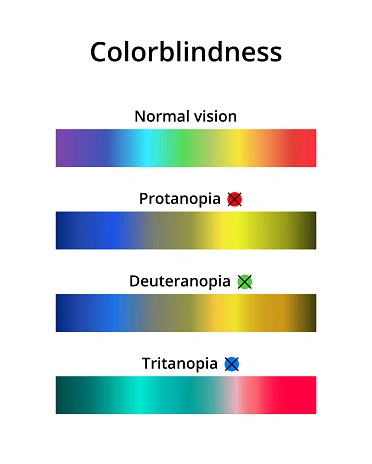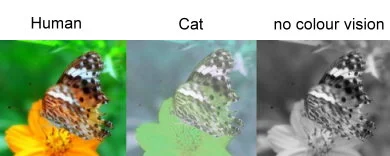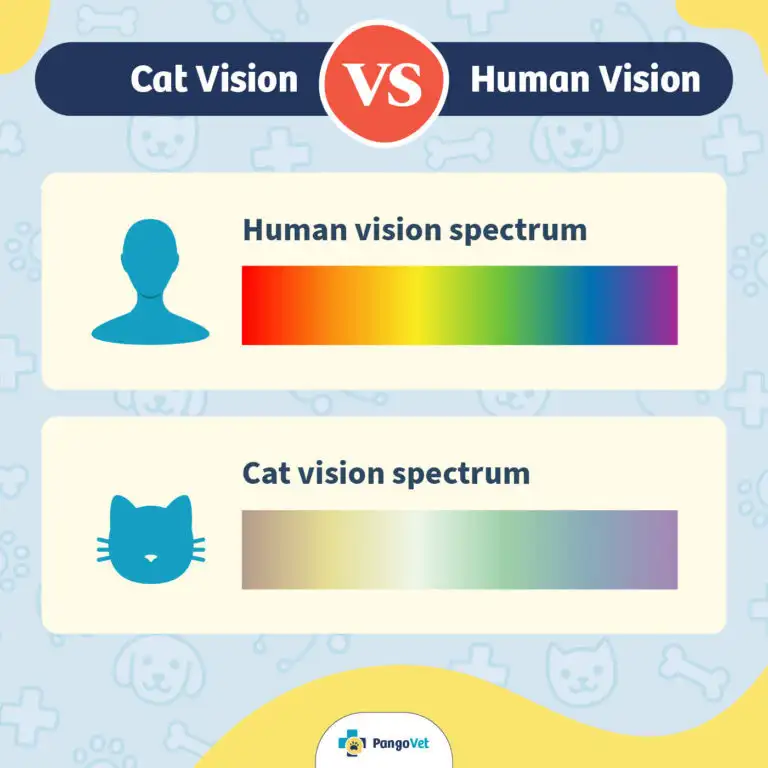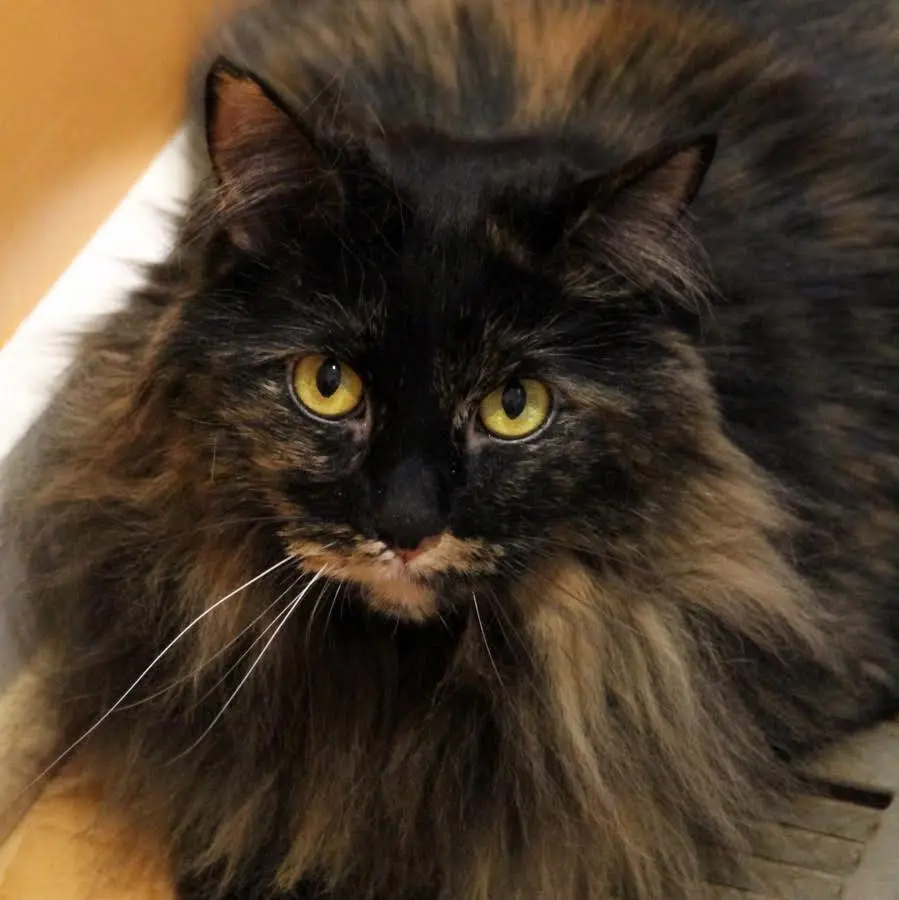Firstly, cats have a higher proportion of rods to cones when compared to human eyes, as well as a structure behind the retina called a tapetum lucidum, which reflects light back to their photoreceptors.
This means they are better able to see differences between dark and light than we are, and in general are estimated to be able to see in brightness conditions about 6 times dimmer than what humans can see in.
But the flipside to this is that, in general, they see less contrast between colors than we do.
EDIT: And they can more easily be blinded by bright lights.
(The tapetum lucidum is also what causes cats eyes to appear to shine or glow in low light conditions)
…
Secondly, cats are are dichromatic, they have very low sensitivity to what we call red, so their perception or color is probably something akin to protonanopia in humans, though not as extreme.

Cats basically percieve the world in what we would call muted tones of blues, yellows, greens and grays.

EDIT: Just found this spectrum comparison, its probably better:

…
Thirdly, cats visual range extends beyond the human visual range into UV. They can see all the way down to 320nm, human vision typically stops at about 400nm.
This is why cats are often transfixed, looking at things that… don’t seem to be there. What they’re looking at does exist, it’s just that we can’t see it.
This also means that they can see distinct color patterns in what we would basically just perceive as blue.
…
Finally, they also have a 200 degree field of view, compared to a human’s 180, meaning they have superior peripheral vision.
Their vision is much more sensitive to motion than humans, but they are also what we would basically call nearsighted, somewhere between 20/100 and 20/200, unable to clearly see things far away.
Dude…
also
What they’re looking at does exist, it’s just that we can’t see it.
Fuck this. The ghosts are not there
Hahah!
Its usually things like dustmotes illuminated in a light band we can’t see, or reflections off of metal or refractions through glass that we just see as maybe a bright spot, but they may see as … basically psychadelic colors.
If you ever have a crystal or window where light shines through at the right angle , such that it makes a spectrum along the wall or floor…
… basically they see some kind of ‘super’ blue that extends beyond where our vision cuts off. The prism’s rainbow pattern keeps going, we just can’t see it.
Also, blacklights are probably very weird for them.
EDIT: Oh god.
They can probably always see a wide array of … things humans can only see with blacklights.
Greeblings. Not ghosts, greeblings.
There are a couple of posts on Red-dit and Thre-eads, but I won’t link to those; here’s another description, although it’s wrong. It attributes Greebles to Red-dit, but the term predates not only that site, but the web entirely. I first heard about greeblings in 1983.
Nice!!! Do dogs next!
Only if you give me a treat.
Thank you for taking the time to write this. That was an awesome read!
=D
That was fascinating as fuck
They are dichromats—with red and blue receptors—as opposed to most humans, who are trichromats with red, green, and blue receptors. So in terms of colors, they can distinguish roughly the same colors as a human looking through a magenta filter.
Almost rose-colored glasses
Except that a rose/red filter would pass wavelengths centered around red, while a magenta filter would block wavelengths centered around green. So a magenta filter would let in proportionally more blue. (Or to put it another way: rose-tinted glasses would tend to make your vision monochromatic instead of dichromatic.)
Cats are near sighted but can see much better in the dark compared to us. They also have a wider field of view.
They see color similiar to how a person with protanopia would. At least, that is what I understood from the wiki.
It’s like looking through a catleidascope
Funny thing: cats (and dogs) can see a bit of the ultraviolet spectrum. They see dandelion as pink.
They do, but differently than us. They trade some sharpness and colour perception for field of view, low light vision, and speed / motion tracking. 30fps to a cat would look like a series of stills. Source via Archive.org
This seems like an easily searchable question
you’re an easily searchable question.
Crap!
If you’ve seen the right cheesy porn, there’s a yo-momma joke in there somewhere.
Funny, that’s what yo mama told me last night!






